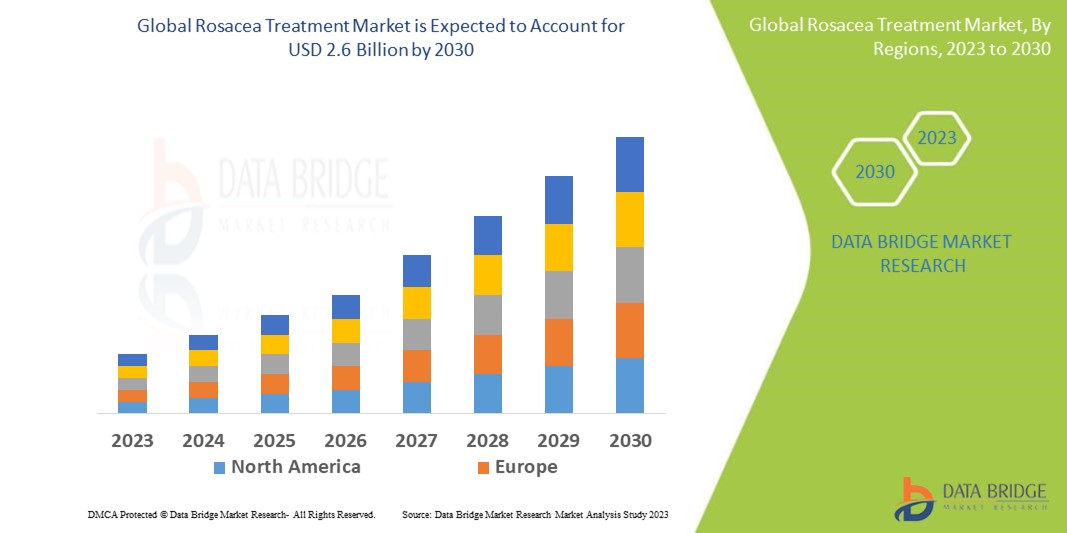 Indtrduction
Indtrduction
Rosacea, a chronic inflammatory skin condition affecting the face, presents with redness, flushing, visible blood vessels, and sometimes inflammatory lesions. Its impact extends beyond physical appearance, affecting self-esteem and quality of life. The Rosacea Treatment Market is a dynamic space offering increasingly sophisticated management options.
Understanding the Growing Need: Market Drivers
The rosacea treatment market is expanding due to rising prevalence linked to better diagnostics and environmental factors (International Journal of Dermatology, 2021), a growing aging population (WHO, 2021), increased awareness and reduced stigma, advancements in treatment, a focus on aesthetics, and improving healthcare infrastructure.
Current Treatment Landscape: A Multifaceted Approach
Rosacea management involves tailored strategies using topical medications, oral medications, and energy-based therapies.
1. Topical Medications: First-line for mild to moderate rosacea:
- Topical Antibiotics: Metronidazole, azelaic acid, and clindamycin reduce inflammation. Metronidazole has established efficacy.
- Alpha Agonists: Brimonidine and oxymetazoline target facial redness by constricting blood vessels, anticipated for high growth.
- Topical Retinoids: Used cautiously for inflammation and skin texture.
- Corticosteroids: Short-term use for severe inflammation, long-term use generally avoided.
- Immunosuppressants: Tacrolimus and pimecrolimus used off-label for inflammation.
- Benzoyl Peroxide: Microencapsulated formulations like EPSOLAY treat inflammatory lesions gently.
2. Oral Medications: For moderate to severe rosacea, often with topicals:
- Oral Antibiotics: Tetracycline, doxycycline (including sub-antimicrobial doses), and minocycline for anti-inflammatory effects.
- Oral Retinoids: Isotretinoin for severe, refractory cases with careful monitoring.
- Beta-Blockers: Off-label for managing flushing.
3. Energy-Based Therapies: Target visible blood vessels and redness:
- Laser Therapy: PDL and Nd:YAG lasers reduce telangiectasia and redness.
- Intense Pulsed Light (IPL): Treats redness, flushing, and visible blood vessels.
- Other Procedures: Electrocautery for individual prominent vessels.
Emerging Trends and Innovations Shaping the Future
The market is seeing exciting developments:
- Combination Therapies: Combining treatments like oral doxycycline and topical ivermectin for synergistic effects.
- Targeted Biologics: Novel drugs modulating specific inflammatory molecules, like Tarsus Pharmaceuticals' TP-04.
- Focus on the Skin Microbiome: Treatments targeting Demodex mites (e.g., ivermectin) and future microbiome-modulating therapies.
- Advancements in Topical Formulations: Microencapsulation and novel vehicles for better drug delivery and tolerability (e.g., EPSOLAY).
- Personalized Medicine: Tailoring treatments based on individual rosacea subtypes, severity, and response.
- Digital Health and Telemedicine: Improving access to care and remote monitoring.
- Over-the-Counter (OTC) Options: Growing demand for effective OTC products, particularly in the rapidly expanding Asia Pacific market.
Regional Insights: A Global Perspective
- North America: Largest market share due to high awareness and advanced healthcare. The U.S. dominates.
- Europe: Second-largest market with increasing awareness.
- Asia Pacific: Fastest-growing market driven by improving healthcare and demand for OTC options. China and India are key.
- Latin America, Middle East & Africa: Growing markets with increasing awareness and access.
Navigating the Market: Key Players and Competitive Landscape
The market is moderately competitive with major players like AbbVie, Bayer, Bausch Health, Galderma, and LEO Pharma, alongside specialized companies like Sol-Gel Technologies and Aclaris Therapeutics. Strategies include developing innovative treatments and strategic collaborations (e.g., Sol-Gel/Galderma for EPSOLAY).
Source : https://www.databridgemarketresearch.com/reports/global-rosacea-treatment-market
Conclusion: A Brighter Future for Rosacea Management
The rosacea treatment market is set for continued growth driven by increasing prevalence and therapeutic advancements. Combination therapies, biologics, microbiome-focused treatments, and personalized approaches offer hope for more effective management and improved quality of life for individuals with rosacea. Staying informed and consulting with a dermatologist are crucial for navigating this evolving landscape.
 Indtrduction
Indtrduction